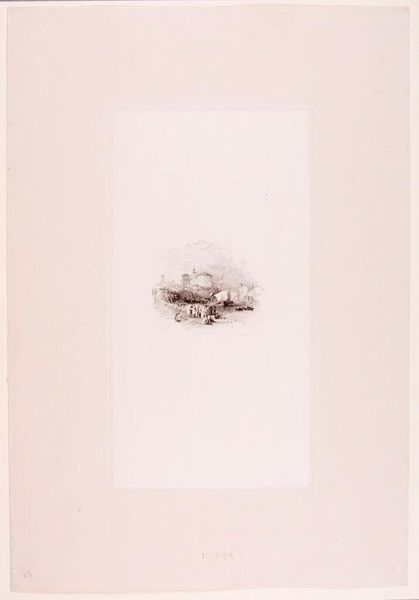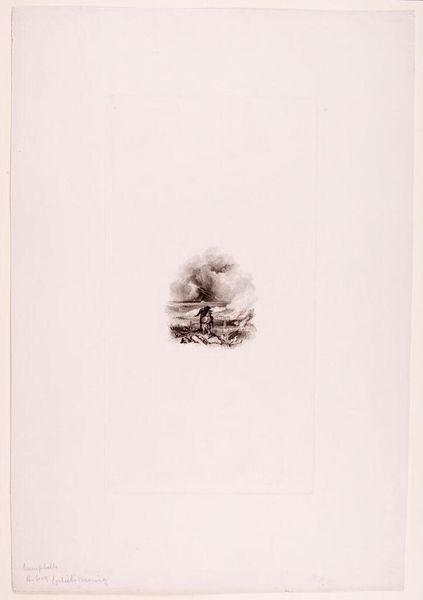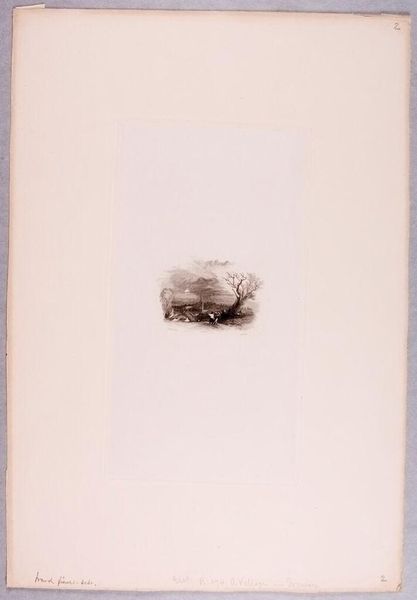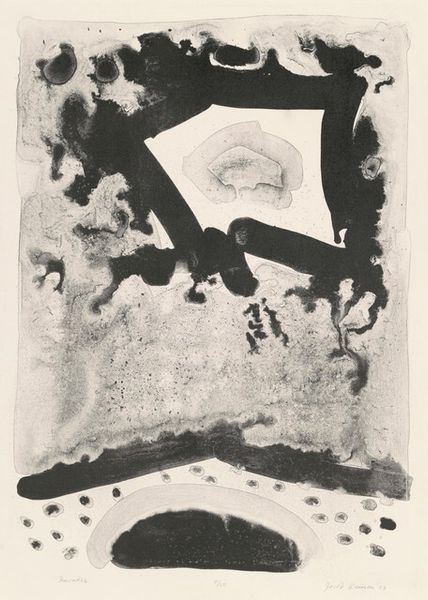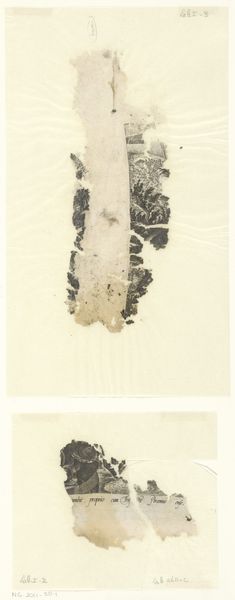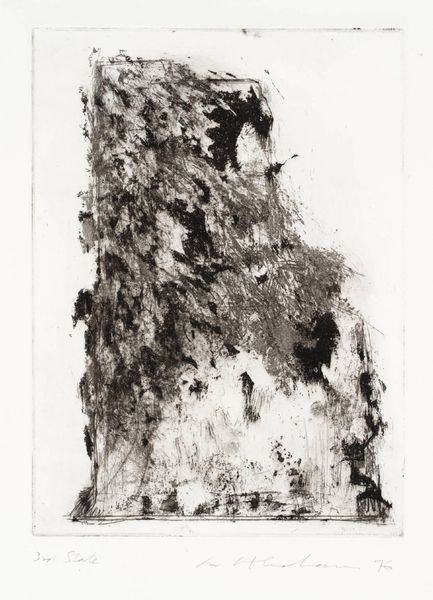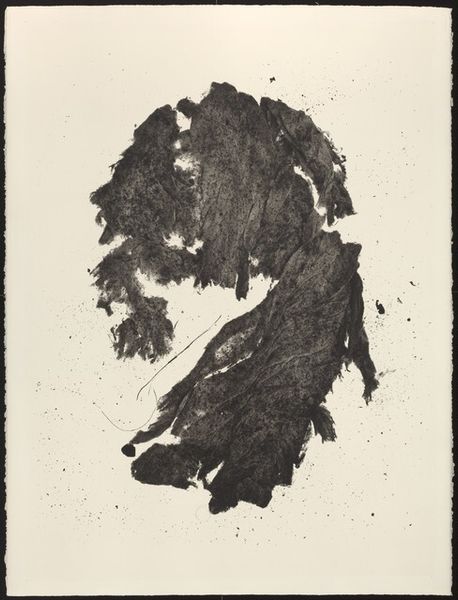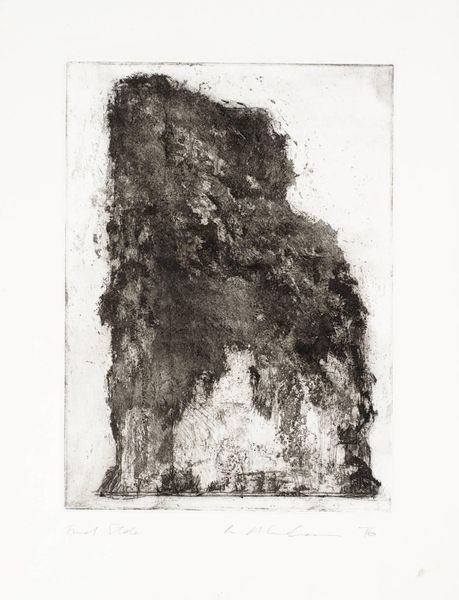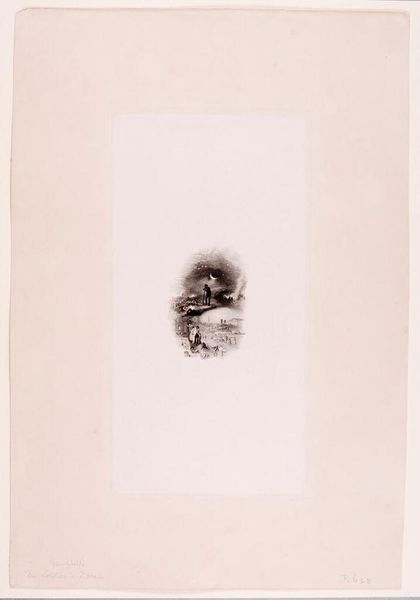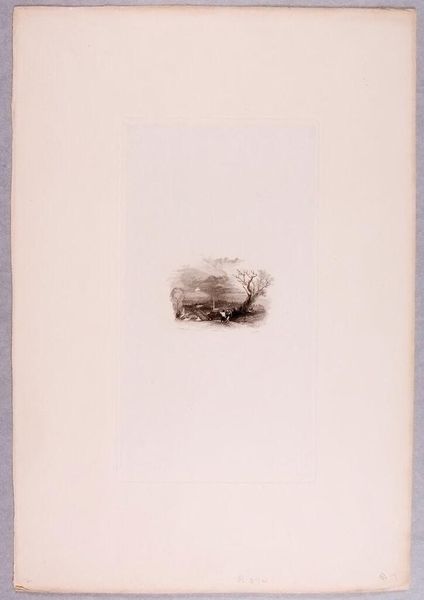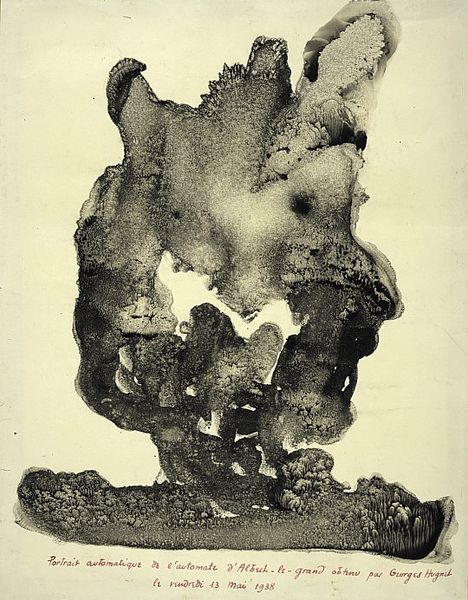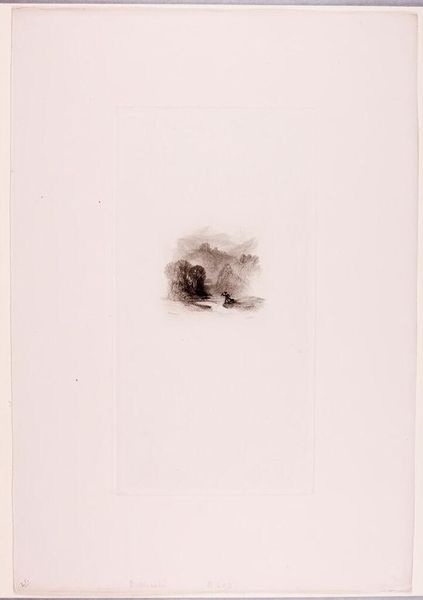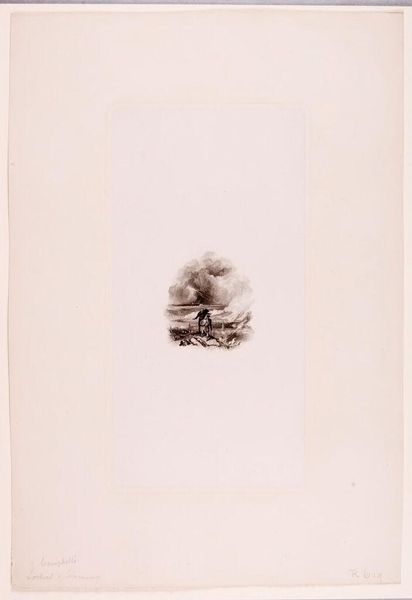
drawing, print, paper, ink
#
pencil drawn
#
drawing
# print
#
paper
#
form
#
ink
#
geometric
#
abstraction
#
line
#
monochrome
Copyright: National Gallery of Art: CC0 1.0
Curator: Looking at this evocative, untitled ink and pencil drawing by Aubrey Schwartz from 1962, one is immediately struck by the tension between form and fluidity. Editor: Indeed, it feels heavy, almost like looking at the remnants of something. Dark and substantial. There’s a rawness to the shapes—ominous clouds, or perhaps fractured land masses. The contrast between the density of the ink and the bare paper around it feels particularly loaded. Curator: Absolutely. Schwartz, throughout their work, uses abstraction as a means to explore and often destabilize the formal constraints inherent within representational art. You see this particularly in their commitment to line work and their subversion of recognizable shapes. Considering the socio-political tensions of the early '60s— the escalating Cold War, anxieties around nuclear proliferation, I wonder if the somber tonality isn't about those prevailing cultural anxieties and identity. Editor: I am inclined to agree. Those inky blots feel like relics—shadows cast by larger cultural phenomena. Their deliberate placement on the page, with a stark gap between, almost suggests separate but related incidents, two chapters of the same troubled narrative. I think that while seemingly abstract, their specific arrangement speaks to that deeper underlying narrative. There's a story hidden beneath the monochrome. Curator: What I find compelling is the almost aggressive use of materials juxtaposed with an apparent delicacy of line and touch. In my perspective, it becomes about understanding what histories these shapes inhabit and how that manifests in a period marked by deep-seated unrest and questions about global futures. Editor: Yes, that contrast certainly grabs my attention. And now, reflecting on the use of monochrome further heightens that sense of immediacy, don't you agree? By depriving us of colour, the artist forces us to examine form and texture in all their visceral starkness. The shadows become just as important, imbued with history, weight, and an undeniable presence. Curator: And so, by deconstructing expected formal qualities of artwork, Schwartz pushes viewers to engage more deeply in not just aesthetic experience, but a critical one, asking us to reckon with the very foundations upon which meaning and identity are built in times of conflict and division. Editor: Precisely. It becomes less about observation, and more an immersive journey into our collective memory, stirred by primal forms cast in striking shadows.
Comments
No comments
Be the first to comment and join the conversation on the ultimate creative platform.

